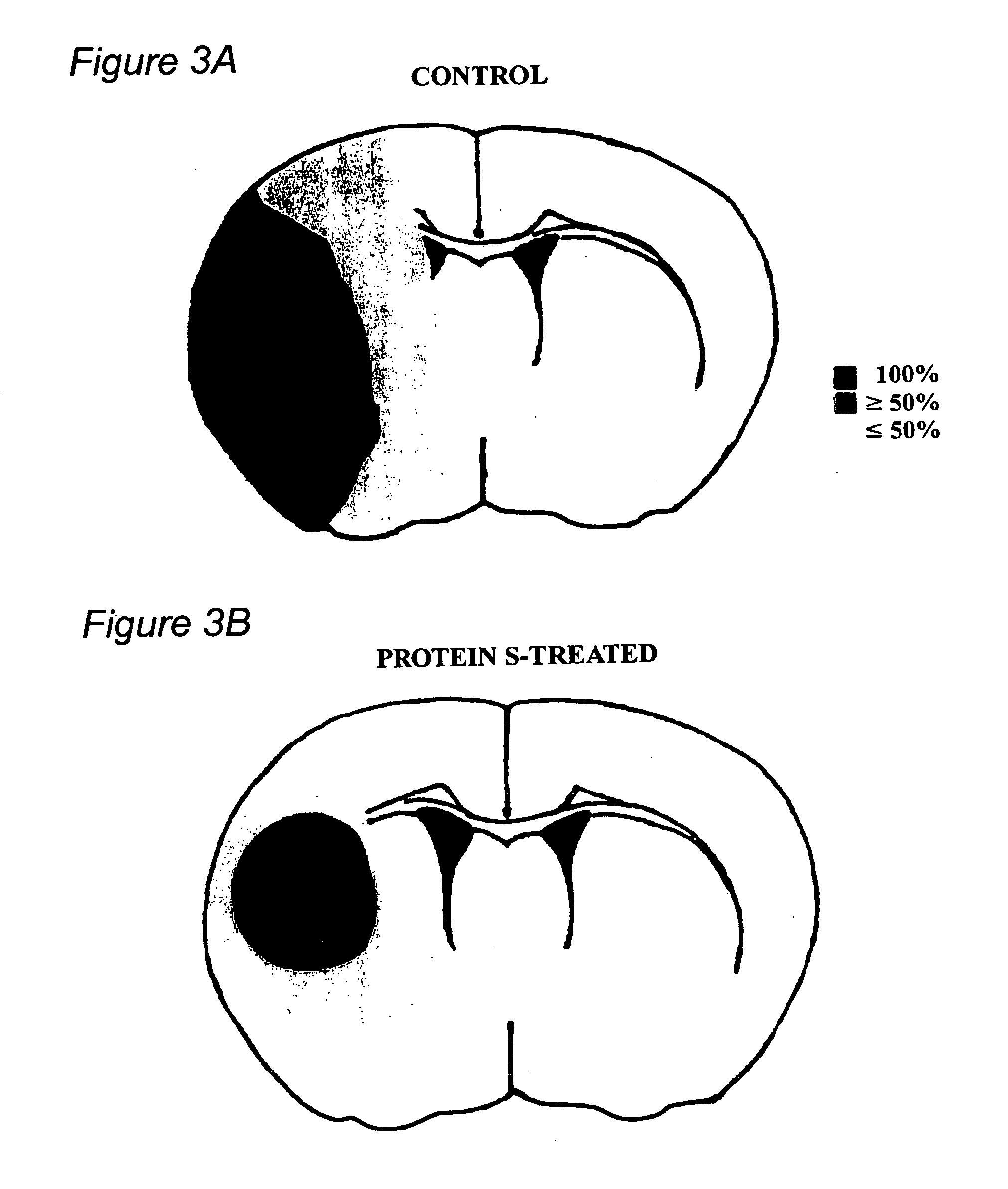Protein s protects the nervous system from injury
a technology of protein s and nervous system, applied in the field of protein s, can solve the problems that subjects in need of treatment may be at risk or already affected, and achieve the effect of improving cell protection, preventing cell injury or tissue damag
- Summary
- Abstract
- Description
- Claims
- Application Information
AI Technical Summary
Benefits of technology
Problems solved by technology
Method used
Image
Examples
examples
[0059] The effects of purified human plasma-derived or recombinant protein S was examined in a murine in vivo model of focal ischemic stroke and an in vitro neuronal hypoxic / re-oxygenation injury. Protein S significantly improved motor neurological function after stroke and reduced brain infarction and edema in a dose-dependent manner. At higher concentrations protein S enhanced post-ischemic reperfusion and reduced brain fibrin and neutrophils deposition. In vitro protein S protected cultured cortical neurons from hypoxia / re-oxygenation-induced apoptosis. Protein S may be a prototype of a new class of neuroprotective agents with combined anti-thrombotic, anti-inflammatory and direct cellular neuroprotective effects to treat disease associated with ischemia, hypoxia, and other re-oxygenation injury (e.g., stroke) as well as similar diseases and other pathological conditions.
[0060] Animals. Procedures were approved by the University of Rochester's Institutional Animal Care and Use C...
PUM
| Property | Measurement | Unit |
|---|---|---|
| concentration | aaaaa | aaaaa |
| dissociation constant | aaaaa | aaaaa |
| pH | aaaaa | aaaaa |
Abstract
Description
Claims
Application Information
 Login to View More
Login to View More - R&D
- Intellectual Property
- Life Sciences
- Materials
- Tech Scout
- Unparalleled Data Quality
- Higher Quality Content
- 60% Fewer Hallucinations
Browse by: Latest US Patents, China's latest patents, Technical Efficacy Thesaurus, Application Domain, Technology Topic, Popular Technical Reports.
© 2025 PatSnap. All rights reserved.Legal|Privacy policy|Modern Slavery Act Transparency Statement|Sitemap|About US| Contact US: help@patsnap.com



